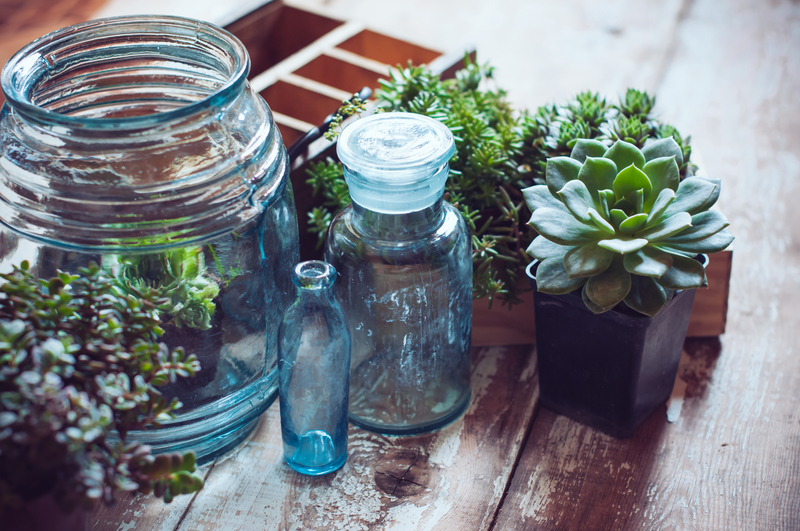Comprehensive Clutter Removal Strategies for Hoarder Clean Up Situations
Living with hoarding disorder or assisting someone who struggles with chronic clutter can be emotionally and logistically challenging. Hoarder clean up situations demand a multi-faceted approach combining compassion, systematic methods, and sustainable habits. This article explores effective clutter removal strategies tailored for hoarding cleanups, offering a step-by-step guide, tips for overcoming obstacles, and advice for maintaining a clutter-free environment. Whether you're helping a loved one or seeking solutions yourself, our guide will provide the tools and understanding needed to tackle even the most overwhelming spaces.

Table of Contents
- Understanding Hoarding Disorder
- Preparing for a Hoarder Clean-Up
- Practical Strategies for Clutter Removal
- Essential Safety Guidelines
- Emotional and Psychological Considerations
- Maintaining a Clutter-Free Home
- FAQ: Hoarder Cleanup Strategies
Understanding Hoarding Disorder
Before diving into **clutter removal strategies**, it's crucial to understand the psychology behind hoarding and the impact it has on individuals and families.
- Definition: Hoarding disorder is a persistent difficulty discarding or parting with possessions, regardless of their actual value.
- Symptoms: Excessive accumulation, extreme attachment to items, and significant distress associated with discarding.
- Risks: Health hazards, fire risks, compromised living space, and social isolation are common consequences.
Empathy and *non-judgmental communication* are essential when addressing hoarder clean up situations. The primary goal is not just to clean, but to support the hoarder's emotional well-being throughout the process.
Preparing for a Hoarder Clean Up Situation
1. Assemble the Right Team
Clutter removal for hoarding cases can be overwhelming for one person. Involve a team: family, friends, or professional hoarder clean up services who are trained in sensitive clean-up operations.
2. Assess the Space
Conduct a thorough but respectful assessment of the cluttered environment to identify:
- Safety hazards (blocked exits, unstable stacks, mold, or pests)
- Salvageable versus unsalvageable items
- Access to utilities and emergency exits
3. Gather Cleaning Supplies
- Heavy-duty trash bags
- Gloves and protective clothing
- Masks and respirators
- Organizing bins and boxes
- Basic cleaning products
- Labels for categorizing
- First aid kit
*Preparation sets the foundation for a safer, more efficient clutter removal process and reduces risks during hoarder property cleanups.*
Practical Clutter Removal Strategies for Hoarder Clean Up Situations
1. Establish Clear Categories for Sorting
Define categories: Keep, Donate, Recycle, Discard, and Undecided. Use labeled bins or boxes for each group. This system prevents repeated handling and accelerates decluttering in a hoarded home.
2. Start Small and Focused
Begin with a small, manageable area, such as a single countertop or a corner of a room. Quick wins can build momentum and *motivate ongoing progress*.
3. The Four-Box Method
- Keep: Only items with clear, current utility or strong emotional value.
- Donate: Usable items someone else can benefit from.
- Sell: Valuable possessions that do not serve the owner anymore.
- Trash: Damaged, expired, or unsanitary items.
For hoarders, the "Undecided" category is crucial as they may require more time or discussion to part with some belongings.
4. Set Realistic Goals and Timelines
- Break the project into daily, weekly, and monthly goals.
- Celebrate milestones, such as clearing a walkable path or reclaiming a space.
- Schedule regular clean-up sessions rather than aiming for a single massive overhaul, which can be overwhelming.
5. Involve Mental Health Support
Consider collaborating with mental health professionals. They can help address emotional attachments and provide coping strategies for both the person with hoarding disorder and their support network.
6. Utilize Professional Hoarder Clean Up Services
For severe cases, hiring experienced *hoarder cleaning experts* ensures safety, efficiency, and respectful handling of sensitive situations. These specialists are knowledgeable in biohazard disposal, odor removal, and *deep-cleaning techniques*.
Essential Safety Guidelines During Clutter Removal
- Wear Protective Gear: Gloves, masks, goggles, and full-coverage clothing protect against allergens, dust, mold, and sharp objects.
- Be Aware of Structural Hazards: Piles can collapse or obstruct emergency exits.
- Watch for Biohazards: Animal waste, spoiled food, and mold require careful, hygienic removal.
- Use Proper Lifting Techniques: Prevent injuries by lifting with the knees, not the back, and never overexerting yourself.
- Rotate Tasks: Avoid fatigue and repetitive strain by swapping tasks between team members.
- Ventilate the Space: Air out the area during and after clutter removal to reduce exposure to dust and allergens.
Consult professionals if you suspect hazardous materials, pests, or structural instability.
Emotional and Psychological Considerations in Hoarder Clean Up
- Practice Patience: The emotional difficulty of discarding items cannot be underestimated for someone with a hoarding disorder.
- Use Empathetic Language: Avoid judgmental remarks and instead use supportive, collaborative conversation.
- Establish Boundaries: Clearly define what is non-negotiable for safety (e.g., clearing blocked fire exits) while being flexible elsewhere.
- Allow Time for Processing: Remind everyone involved that removing clutter is a process, not a one-time event.
Support groups and therapy can provide invaluable help during and after the clutter removal process for hoarders and their families.
Post-Cleanup: How To Maintain a Clutter-Free Environment
1. Develop New Habits
- Adopt a "one-in, one-out" rule for new possessions.
- Schedule regular decluttering sessions to keep the home organized.
- Set up practical storage solutions so everything has a place.
2. Monitor for Relapses
It's common for old habits to creep back. Encourage ongoing therapy or support group participation for continued resilience against hoarding tendencies.
3. Celebrate Progress
- Take before-and-after photos to track improvement.
- Reward yourself or your loved one for milestones reached.
4. Enlist Accountability Partners
Ask trusted friends, family members, or professionals to periodically check in on the home environment and reinforce positive habits.
Frequently Asked Questions: Comprehensive Clutter Removal for Hoarders
What is the best first step for a hoarder clean up?
- The first step is to show compassion and open a conversation about safety and goals. Once mutual trust and understanding are established, start with a clear plan and sort items into categories.
How do I help a family member with hoarding tendencies?
- Offer non-judgmental support, suggest professional help, and set up boundaries to protect everyone's well-being. Involve them in each clean-up decision to give them control and reduce anxiety.
When should I call a professional hoarder clean up service?
- It's time to call the pros if the home is hazardous, biohazards are present, structural damage is suspected, or the hoarding behavior has escalated beyond manageable means.
How do you motivate a hoarder to start decluttering?
- Find meaningful motivations (health, rekindling relationships, improved quality of life), and set small, achievable goals to show tangible benefits early in the process.
Is there aftercare following a hoarder clean up?
- Yes, ongoing support is vital. Consider therapy, support groups, and periodic check-ins to prevent relapse and empower long-term behavior change.

Conclusion: Taking Control of Clutter--A Transformative Journey
Tackling a hoarder clean up isn't just about removing excess clutter; it's a journey of healing, adaptation, and building new habits. By combining practical strategies, safety best practices, and emotional support, you can help create a safe, welcoming, and healthy living environment. Remember, hoarder clutter removal is a process--sustainable progress comes from empathy, patience, and ongoing commitment.
If you're facing a comprehensive hoarder clean up situation, don't hesitate to reach out for professional assistance. With the right approach, even the most daunting cluttered spaces can be restored to order and peace.
